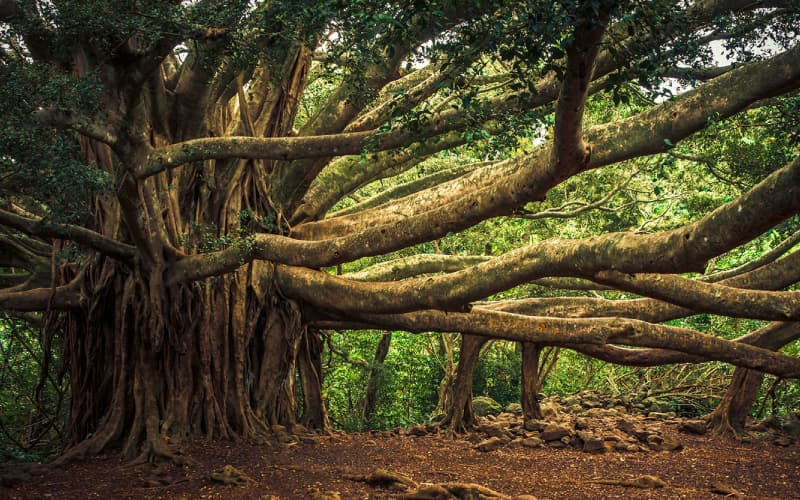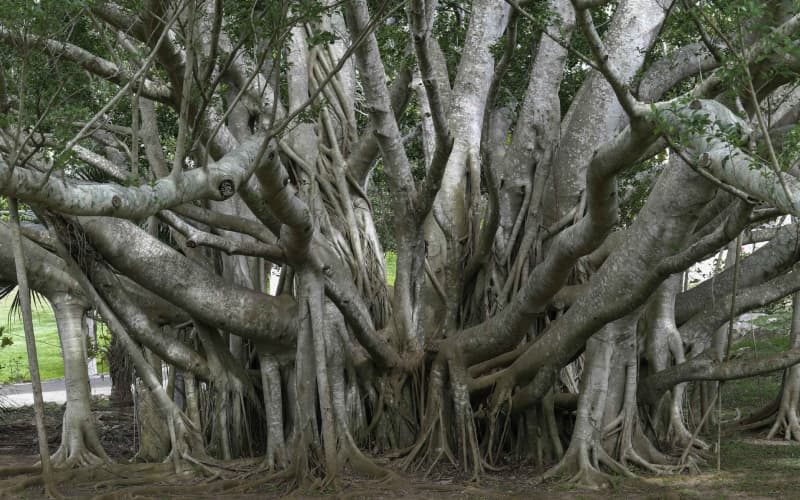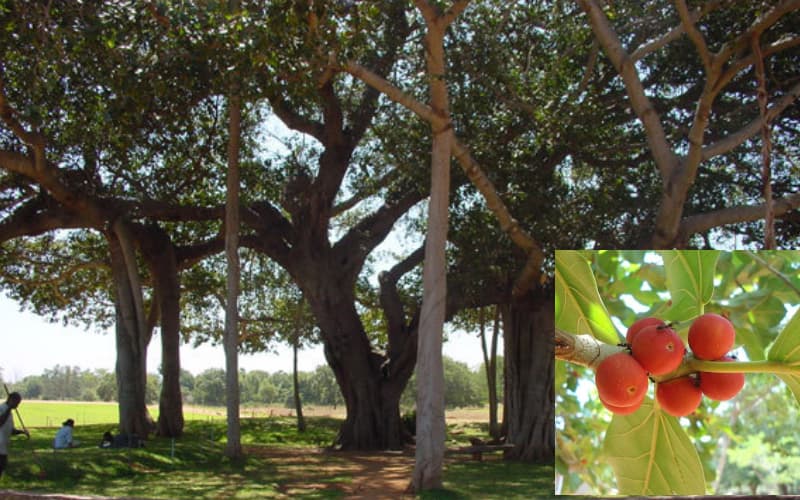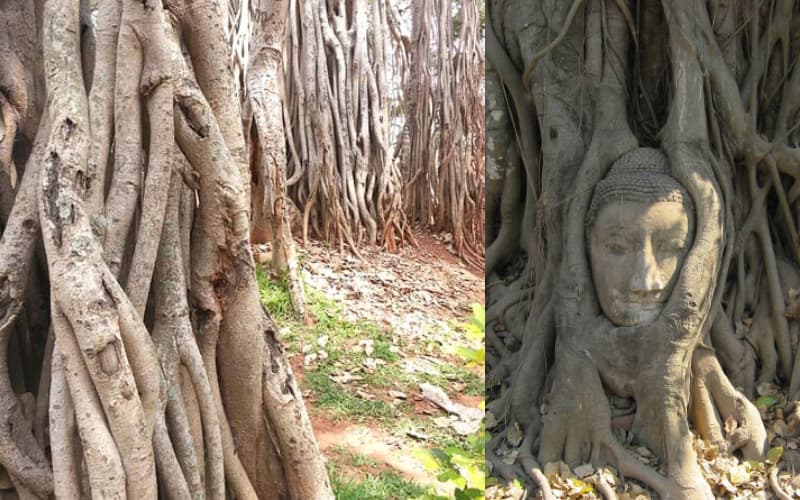
In Hinduism, trees have held great significance. The Vat (in Hindi), Bargad or Banyan tree is one of the most venerated trees in Hinduism. It has the ability to grow and survive for centuries and is compared to as God’s shelter to his devotees. It has large leaves, which are commonly used worship and rituals.
The Banyan tree is considered as the symbol of immortality. It has aerial roots that grow down from its branches forming additional trunks and anchor the tree to the ground, therefore this tree is also known as Bahupaadaa, or the one with several feet. This tree symbolizes the creator Brahma, as it symbolizes longevity.
The Hindu religion considers two types of sacredness, temporary material reality, and permanent material reality. Trees like the coconut and banana fit in the first category as they represent the flesh, constantly dying and renewing itself, while the Banyan represents the latter, it is like the soul, neither dying nor renewing. The Banyan represents one’s spiritual aspirations. It is said to be immortal or Akshaya and can even survive Pralaya or the destruction of the world. The banana tree is considered an equivalent to the householder, while the Banyan is considered and equivalent to the hermit.
It is also associated with Yama, the God of death. Therefore, it is planted outside of villages near crematoriums. This tree does not let even a blade of grass grow under it. That is why it is not used for any fertility ceremonies like childbirth and marriage, as it does not allow renewal or rebirth.

Just as a hermit cannot raise a family or support a household and only has spiritual aspirations. The same way, the banyan tree represents the spiritual aspirations, free from materialism. Under the banyan tree are usually seen hermits who have left the materials aspects of their lives. They reject the flesh in search of the soul alone. The greatest of hermits, Shiva is represented as a stone called Linga under the shade of the banyan tree. Shiva was never part of the village, he didn’t fear ghosts or spirits, and used to stay comfortably in the shade of this immortal tree.
Lord Shiva is seen as Dakshinamurti or the one who faces south, which is regarded as the direction of change and death. In iconography, he is usually depicted sitting under a Banyan tree, the embodiment of universal soul. He faces the terror of change and death and looks unafraid because he possesses all the knowledge in the world. At his feet are the recipients of his knowledge. This is usually depicted on the south-facing wall of the temple.
In Hindu mythology the banyan tree is called Kalpavriksha. Kalpavriksha means the tree that fulfils the wishes of the devotees and gives material gains to them. It is said in scriptures that Lord Vishnu is present in the bark of the Banyan tree, Lord Brahma is present in the roots of the Banyan tree, and Lord Shiva is present in the branches of the Banyan tree. So, the Banyan tree symbolizes Trimurti-s.

Lord Vishnu took the form of a baby during the end of the world when flood water was rising and destroyed everything. During that time, the Lord Vishnu took shelter on the leaves of the immortal and veteran tree as the baby lying on the leaf and cradled himself from the deadly waves. The baby lying on the leaf form of Lord Vishnu is called Vata-Patra-Shayin. The image of this symbolises that the world is transitory like the waves of the sea or ocean and all life can renew itself as a form of a baby replacing the older generation into the new generation. Lord Krishna used to rest on the leaves of the banyan tree.
This tree is also highly regarded in Buddhism as it is believed that Gautama Buddha sat under this tree for seven days after he attained enlightenment to absorb his new-found realization.
The Banyan tree also has medicinal properties and is used extensively in Ayurveda. The bark of the tree and its leaves can be used to stop excessive bleeding from wounds. The latex of the plant is used to cure piles, rheumatism, pain, and lumbago.

It is known as the Vrat-Vrisksha to the people of India. The trading or merchant community or the Banias were worshipping the large shady fig tree and they were noticed by the Britishers from them the fig tree named as the Banyan tree, the word arrived from the Banias.
Reference:
NEXT ARTICLE

A group of eager volunteers and nature enthusiasts, gathered amidst the lush greenery, ready to embark on a mission to enhance the beauty of our surro...